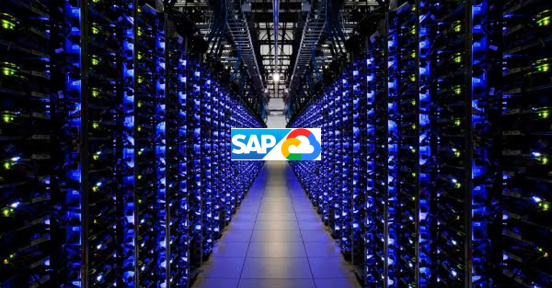27 . 03 . 2025
Cloud environment: types, providers and security
Get deep into the concept of cloud environment, its types and the main vendors offering advanced solutions to protect data.
Table of contents
By Carlos Lasko (Wezen Infrastructure Leader)
The cloud environment has transformed the way enterprises manage their data and applications. From storing files to running complex processes, the cloud offers flexibility and efficiency.
In this article, we explore what a cloud environment is, the most commonly used types, and how leading vendors offer advanced solutions to protect data in these environments.
What is a cloud environment and what types are there?
The cloud refers to a global network of interconnected remote servers that function as a single ecosystem. These servers store and manage data, run applications, and deliver services such as video streaming, webmail, office software, databases, processing, among others. Instead of accessing files and data from a local computer, they are accessed online from any Internet-connected device.
Companies can deploy cloud resources in four different ways:
- Public Cloud: Public clouds deliver resources, such as processing, storage, networking, development and deployment environments, and applications over the Internet. It is owned and managed by third-party cloud service providers, such as Azure, Google Cloud, and AWS.
- Private Cloud: services exclusive to an organization, offered through a private internal network. It offers greater control and security, making it suitable for companies with high privacy requirements.
- Hybrid Cloud: combines at least one private computing environment (traditional IT infrastructure or private cloud, including perimeter) with one or more public clouds.
Allows you to leverage resources and services from different computing environments and choose which one is best for your workloads. - Multiple clouds: Industry studies show that nearly 90% of enterprises now consider themselves multi-cloud. What this means is that they combine cloud services from at least two different cloud service providers, either public or private.
Adopting a multi-cloud approach provides greater flexibility in choosing the solutions that best suit specific business needs and also reduces the risk of vendor lock-in.
What are cloud services?
The resources available in the cloud are known as “services” because they are actively managed by a cloud provider. Cloud services include infrastructure, applications, development tools, and data storage, among other products.
These fall into several different categories or service models.
- Software as a Service (SaaS): is a model in which applications are completely cloud-based and ready to use without the need for installation. The provider is responsible for management, maintenance, updates, and bug fixes, ensuring that users always have access to the latest version. Simply log in from a web browser to get up and running. Popular examples of SaaS applications are Microsoft Office 365, Slack, and Salesforce.
- Platform as a Service (PaaS): offers developers a complete cloud environment to build, run, and manage applications without worrying about infrastructure. The provider takes care of the hardware, software and development environment, while teams need only focus on writing code and managing their data and applications. Some examples of PaaS are Google App Engine, Cloud Run, and Microsoft Azure App Service.
- Infrastructure as a Service (IaaS): offers companies essential resources such as computing, storage, networking and virtualization in the cloud, eliminating the need to manage their own data center. Although the provider takes care of the infrastructure, customers have full control over the operating system, middleware, virtual machines, and any application or data. Examples of IaaS are Google Compute Engine (GCE), Amazon EC2, and Azure Virtual Machine.
- Serverless Computing (FaaS): This relatively new model allows you to run applications without worrying about infrastructure. This model, also known as Function as a Service (FaaS), triggers functions in response to events and scales automatically on demand. Ideal for dynamic applications and resource optimization. Examples include AWS Lambda, Google Cloud Functions, and Microsoft Azure Functions.
Top 3 cloud service providers and their security solutions
Three major vendors are leading the cloud computing market. Each offers advanced tools to ensure the security of data and business operations.
1. Microsoft Azure
Microsoft Azure is a cloud platform that seamlessly integrates with Microsoft products such as Office 365 and Windows Server, easing the transition to the cloud for many businesses.
Azure offers hybrid solutions that combine public and private cloud, which is ideal for organizations with specific compliance and privacy needs.
Microsoft Azure broad offering provides services that cover infrastructure (IaaS), application development (PaaS), and software as a service (SaaS) needs.
Through its hybrid identity and access management platform, Microsoft Entra ID, it facilitates the control and protection of data in combined environments (local and cloud).
In this way, it is positioned as a reliable benchmark for companies seeking to innovate and protect their operations in the cloud.
2. Google Cloud Platform
Google Cloud Platform (GCP) stands out for its focus on security and its ability to handle intensive workloads, making it a key option for companies seeking technological innovation.
- Integrated enterprise security: Offers advanced security solutions specifically designed to protect the most demanding enterprise environments.
- Computational performance: Its high-performance capabilities enable it to handle a wide range of workloads, including those that need the intensive use of resources.
- Big Data and Artificial Intelligence: GCP provides comprehensive tools for big data, machine learning, and predictive analytics, helping enterprises make data-driven decisions.
- Network security: It includes firewall services integrated within its Compute Engine offering, ensuring effective traffic control and enhanced protection.
In other words, the Google Cloud Platform combines security and performance to suit the needs of innovative and growing businesses.
3. Amazon Web Services (AWS)
Amazon Web Services (AWS) is the market leader in cloud services, known for its wide range of services and its ability to scale with business needs. It offers more than 200 integrated services, ranging from compute and storage to artificial intelligence and machine learning. This platform is ideal for businesses looking for flexibility and scalability without the need to manage the underlying infrastructure.
AWS stands out for its robust security, with multiple layers of protection and certifications. In addition, its community of users and partners is the largest and most dynamic, which facilitates access to resources and technical support.
Its flexibility and scalability allow companies to adjust their resources according to demand, which is especially beneficial for startups and large corporations.
Conclusion
The cloud environment is a key tool for optimizing business processes, but its security depends on the type of environment and the measures implemented. Whether it is a public, private, or hybrid cloud, having reliable providers such as Microsoft Azure, GCP or AWS is essential to ensure data protection.
However, securing a cloud environment is not a simple task. Implementing and managing cloud security requires advanced technical expertise and careful planning. That’s why relying on specialized professionals is essential to minimize risks, optimize resources, and ensure operational continuity in an increasingly digital world.
At Wezen, we are committed to strengthening your company’s cloud environment with a team of certified experts. Our goal is to help you implement best practices and security recommendations so you can operate with confidence and efficiency. Find out how we can support you in your transition to the cloud. Write to us.

Image: Pixavay
Source
- Luxner, T. (2024, 7 octubre). Cloud computing trends: Flexera 2024 State of the Cloud Report. Flexera Blog. https://www.flexera.com/blog/finops/cloud-computing-trends-flexera-2024-state-of-the-cloud-report/


